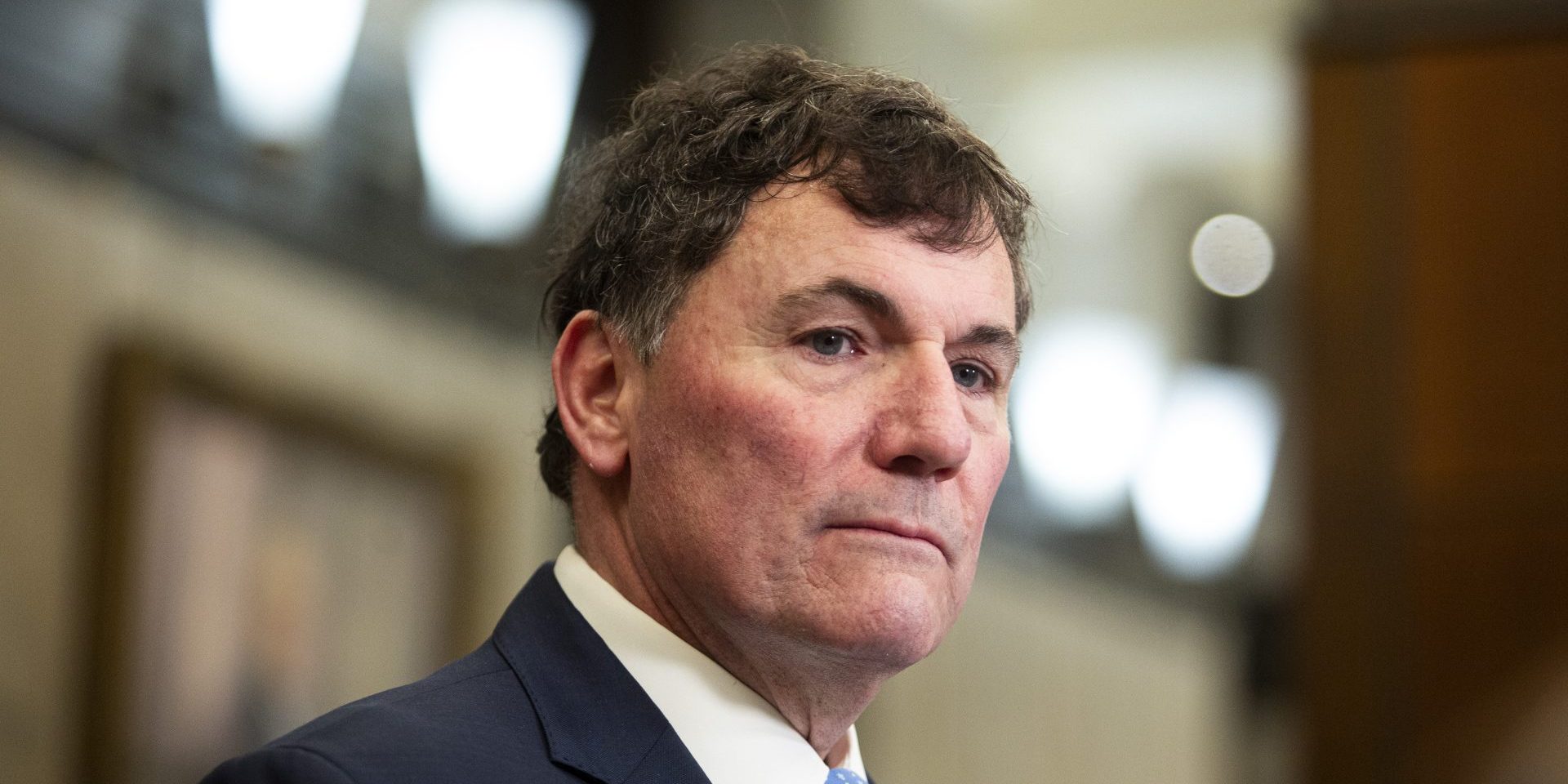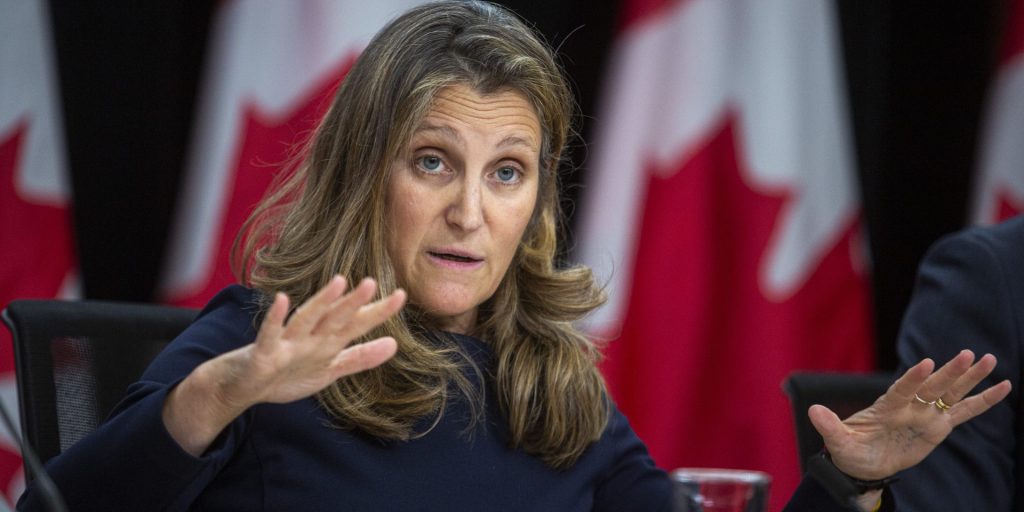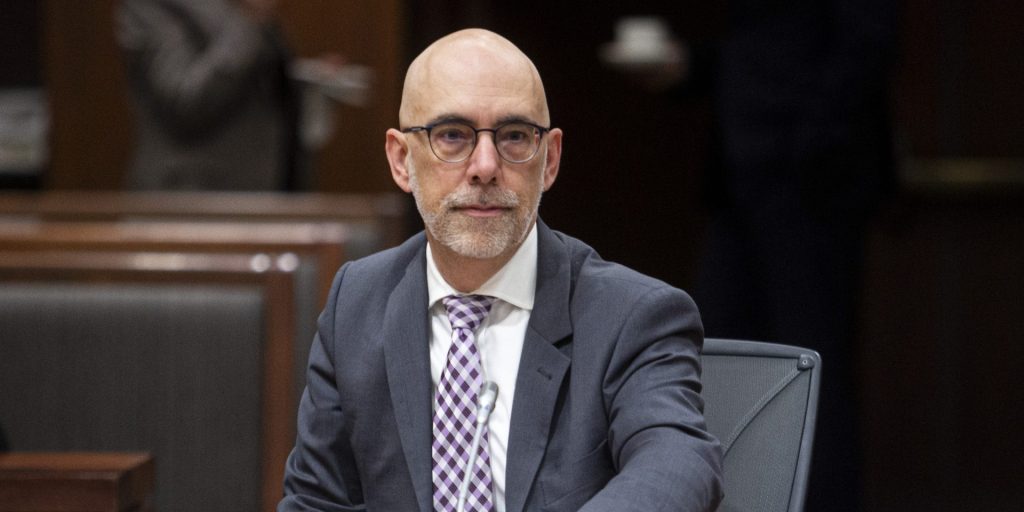Anchors away? Grits to keep Freeland-era fiscal guardrails as Ottawa faces tariff shock: LeBlanc

As Ottawa considers COVID-style spending to address looming U.S. tariffs, the Liberal government’s “appalling” debt and deficit position—combined with a failure to bring its post-pandemic fiscal house back in order—leaves Canada in a precarious position to deal with another fiscal shock, say public finance experts.
Despite that risky fiscal stance, a spokesperson for Finance Minister Dominic LeBlanc (Beauséjour, N.B.) told The Hill Times he remains committed to two of the fiscal anchors set by his predecessor: a declining debt-to-GDP ratio—though only in the “medium term”—and keeping the deficit below one per cent of GDP in 2026-27 and onward.
However, the current Liberal government has a track record of repeatedly missing its fiscal anchors, and public finance experts are not convinced these latest pledges by LeBlanc are realistic.
“This is exactly why I told [the Liberals] that [they] should be getting rid of the deficit and lowering the debt burden before because you have to be prepared for the inevitable next shock,” said economist Don Drummond. “Because there always is a next shock.”
Canada is facing a period of potential economic turmoil as its largest trading partner, the United States, threatens tariffs of up to 25 per cent. U.S. president Donald Trump first threatened the levies on all Canadian goods upon his inauguration. He’s now talking of invoking them on Feb. 1, but considering making fossil fuel an exception.
The Globe and Mail reported on Jan. 28 that Ottawa is considering “a multibillion-dollar, pandemic-style bailout for workers and businesses” as a response if tariffs are levied. The measures would focus on helping those affected afford essentials like rent and groceries, and support businesses in meeting payroll and other expenses, according to unnamed government sources in the story.

Drummond—who was an associate deputy minister at Finance Canada in the 1990s—said that he has been encouraging the Liberals to move back to lower debt levels for some time. He expects the government’s grasp on its fiscal anchors will slide further in the coming fiscal shock.
“I have been screaming that from the rooftop for many years and been ignored,” said Drummond. “So we’re going into the next shock with a debt-to-GDP ratio of over 40 per cent, and that is appalling.”
Drummond said that any tariff relief programs would likely see Canada taking on a significant new amount of debt, and that means “more and more of the taxpayers’ money for a long, long time” is going to be paying the interest.
“That’s yet another big transfer onto younger people who can’t afford a house,” said Drummond. “And now we’re just piling on something more on them.”
While Drummond said it “pains” him to think about Canada taking on more debt, it would be necessary if the fiscal shock were to materialize.
“You can’t say to the automobile worker who’s going to be put out of work, ‘Sorry, I can’t help you because our deficit is too high,” said Drummond. “That’s just inhumane.”
LeBlanc doubles down on Freeland’s anchors

The Hill Times reached out to LeBlanc, asking whether the new minister is committed to maintaining the fiscal anchors set under former finance minister Chrystia Freeland (University-Rosedale, Ont.).
A spokesperson for LeBlanc said the government remains committed to “reduce the federal debt-to-GDP ratio,” but only “over the medium-term.”
“This metric is key not only for fiscal sustainability, but also to preserve Canada’s AAA credit rating, which helps maintain investors’ confidence and keeps Canada’s borrowing costs as low as possible,” they said by email.
The spokesperson said the government also remains “guided by a fiscal objective” it held under the last minister: “keeping the deficit under one per cent of GDP in 2026-27 and future years.”
The spokesperson did not address whether the government remains committed to its prior pledge to have a declining deficit-to-GDP ratio in 2024-25
LeBlanc’s office also did not state whether it would keep its deficit target of $39.8-billion for the current fiscal year, as outlined in the 2024 fall economic statement.
A Jan. 30 Parliamentary Budget Officer report, titled Stress Testing the Government’s Fiscal Anchor and Fiscal Objective, looked at the likelihood of whether these targets could be maintained during a fiscal shock. It used the FES 2024 forecast as the baseline scenario, and did not take into account the threat of tariffs.
The report found the government has only a 61-per-cent chance of maintaining its declining debt-to-GDP ratio when a fiscal shock is applied to the baseline, and an 18-per-cent chance of keeping its deficit below one per cent of GDP for 2026-27 in a shock scenario.

Don’t count on tariff revenues to offset spending: Lang
Former Finance Canada official Eugene Lang said any relief program’s impact on the government’s ability to maintain its fiscal anchors will depend on the nature and scale of both the tariffs and relief programs.

He said it remains to be seen if the Liberals will implement relief programs that are COVID-like in their scale of spending, or if it is more a matter of using program structures that were useful during the pandemic, and which could perhaps be improved based on lessons learned from that experience.
However, he said the current government has a track record of missing all of its fiscal anchors, and “it’s hard to reconcile” the idea of these relief programs with the government keeping its targets.
Lang also emphasized that Canada should not see retaliatory tariffs as a reliable source of revenue to fund any relief programs.
He noted tariffs have not been used for the primary purpose of revenue for decades, and that last year the federal government’s total tariff revenues were only a few billion dollars.
“We’ve never used tariffs as a revenue source in modern times. We don’t know how to do it,” said Lang, who is now a policy professor at Queen’s University. He said any estimates about the revenues they would generate are being pulled “out of the air.”
He added it is inconsistent to criticize tariffs as being bad for the economy while also relying on them as a revenue source.
“If we believe our rhetoric that tariffs are a bad thing for the economy, I don’t know how we can sustain the argument that tariffs are a good thing in terms of revenue to support the economy,” said Lang.
‘Shifting the costs from the present to the future’: C.D. Howe report
A new report from the C.D. Howe Institute, released Jan. 28, found that Canada’s debt held by both federal and provincial governments leaves the country in a compromised position to weather the next fiscal shock, and that both levels of government should move to lower debt levels.

“Deficits and debt [have] real economic costs,” said John Lester, a C.D. Howe fellow-in-residence and co-author of the report.
The report discussed, for example, how higher interest payments would either crowd out program spending, or necessitate higher taxes that limit productivity.
“You’re shifting the costs from the present to the future, and during an economic downturn, that’s completely legitimate,” said Lester, a former federal government economist. “But they have to have a plan to pay back the debt for generational fairness.”
He said Canadians 20 to 30 years down the line “shouldn’t be paying off the debt that we incurred because we wanted to avoid the consequences of an economic downturn.”
“Each generation—or even every 10 or 12 years—we have an economic downturn,” he said, “and the people who benefit from [the supports] should end up paying for it.”
He said governments have not done enough to restore their fiscal position since the pandemic.
“It’s the people alive today that should be doing that, because the next generation is going to have its own downturns and problems as well.”
icampbell@hilltimes.com
The Hill Times






 LICENSING
LICENSING PODCAST
PODCAST ALERTS
ALERTS













